Idea by
Antonio Scarponi
Antonio Scarponi
http://www.conceptualdevices.com
Call for ideas 2017
Campo Libero
Campo Libero
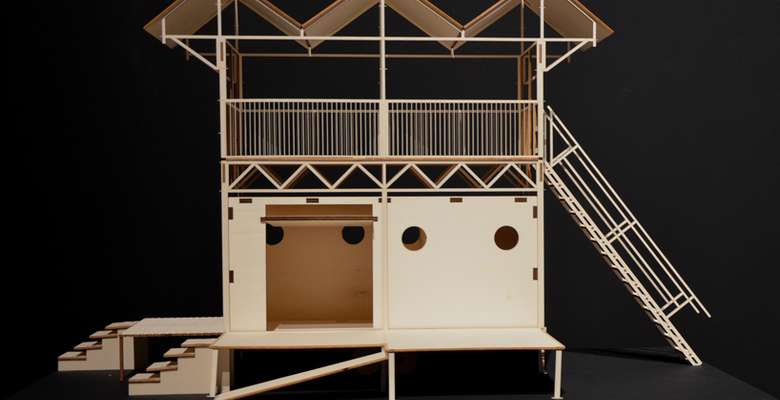
Campo Libero (the innocent house) is a prototype for an off-grid mobile housing unit. It was originally conceived as a device for the reactivation of the lands confiscated from the mafia in the south of Italy for the Italian organization Libera (http://liberaterra.it/it) and commissioned for the Italian Pavilion by the Venice Architecture Biennale 2016. Libera is an organization that promotes legality by providing legal support for people who denounce illegal activities and helping refugees working with no rights in the tomato fields in the south of Italy.
To meet its functional brief, Campo Libero is designed to extend its volume, thanks to an integrated scaffolding structure that provide access to the roof and allows a second story to be built. Campo Libero overlooks the land, reclaiming the archaic lyricism of the southern countryside. Campo Libero is a small project. But it is designed to imagine a soft and reversible way to imagine our built environment.
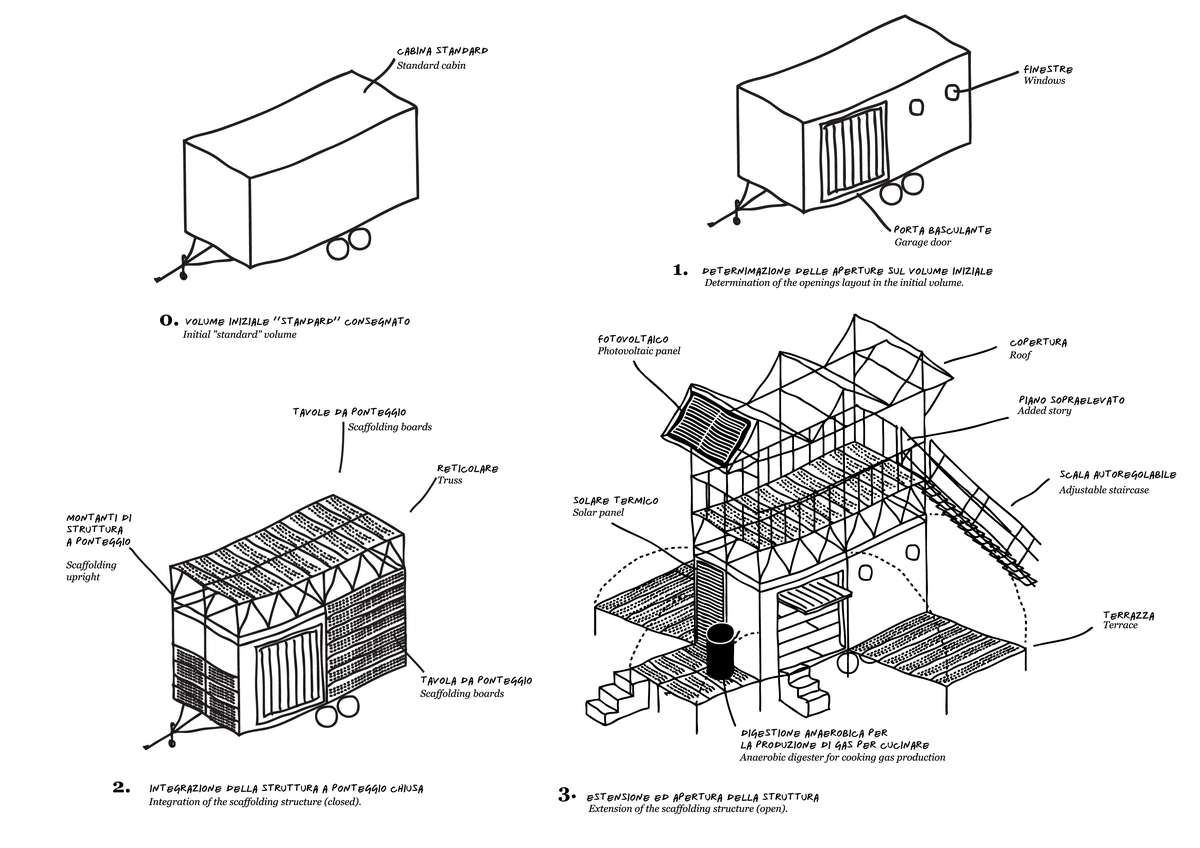
Antonio Scarponi / Conceptual Devices, Campo Libero: Expandible mobile architecture system using scaffolding structures.
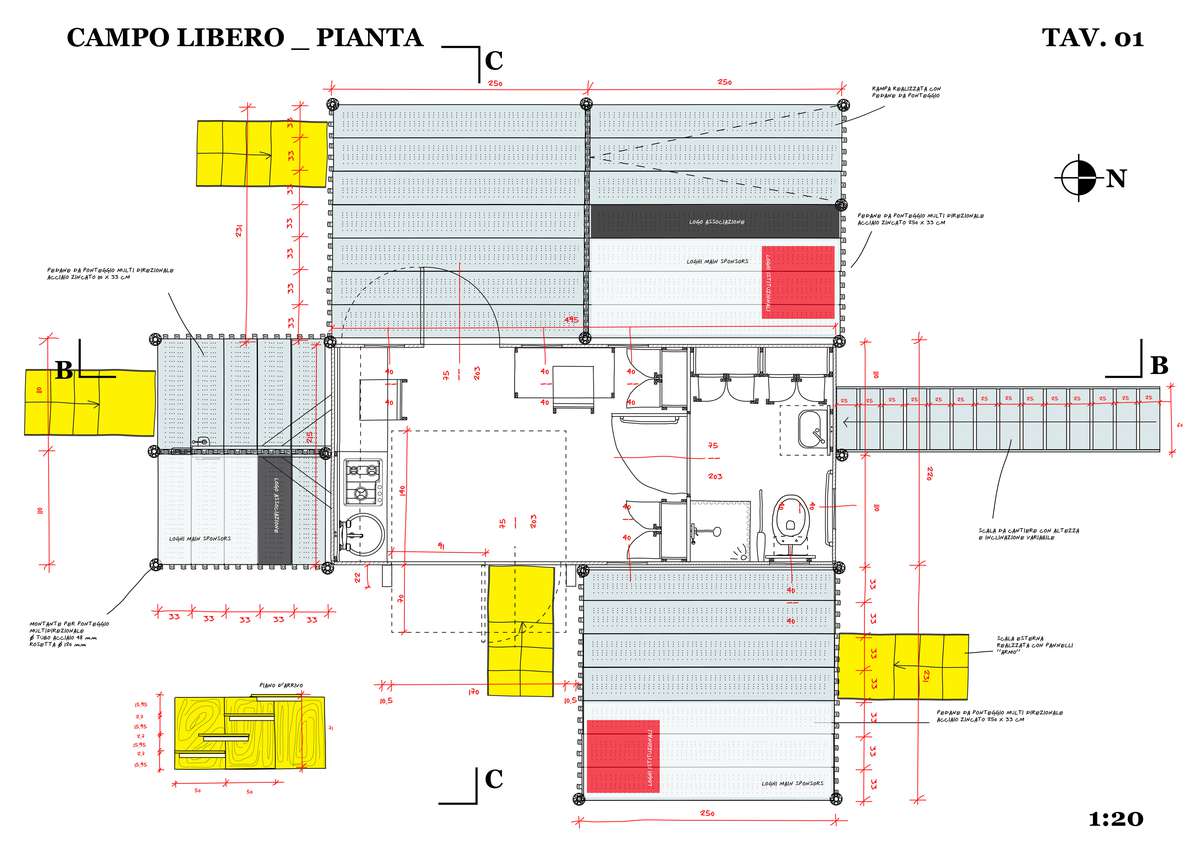
Antonio Scarponi / Conceptual Devices, Campo Libero: plan.

Antonio Scarponi / Conceptual Devices, Campo Libero: elevation on the go.
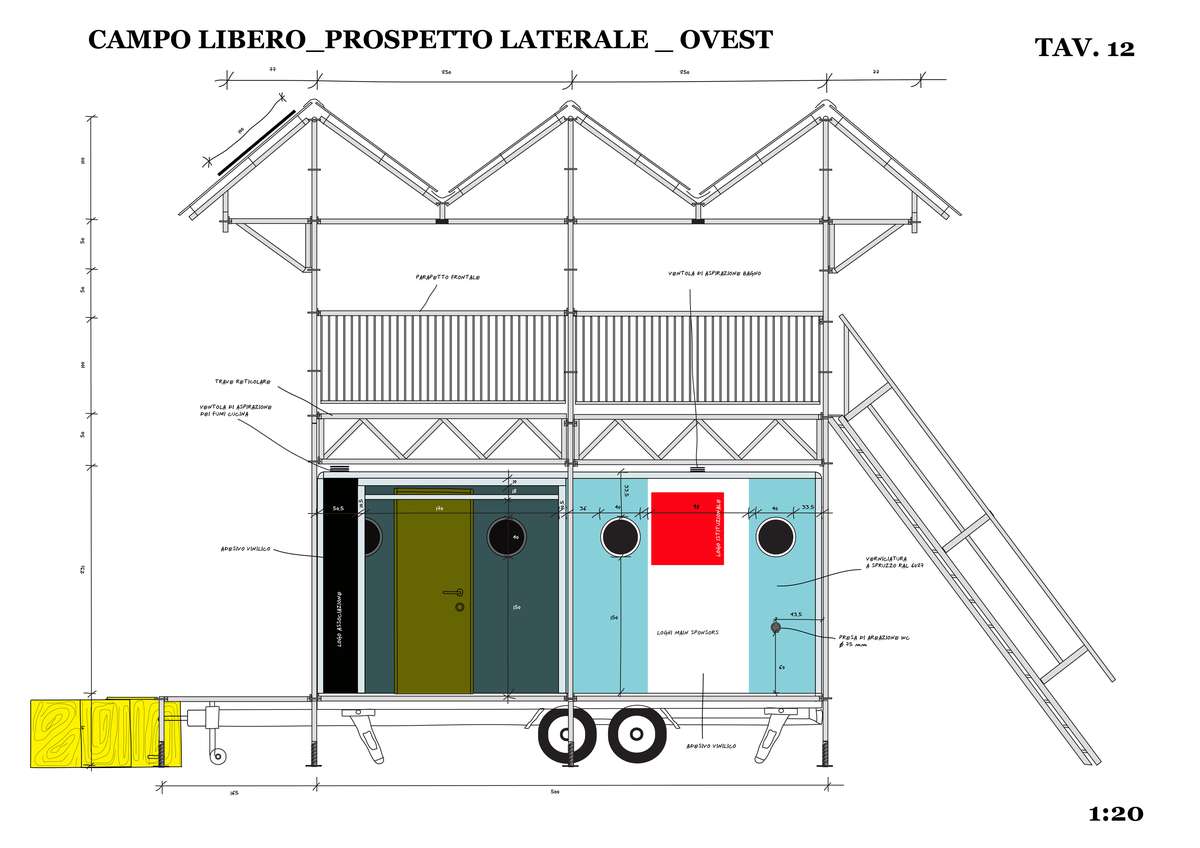
Antonio Scarponi / Conceptual Devices, Campo Libero: elevation open.
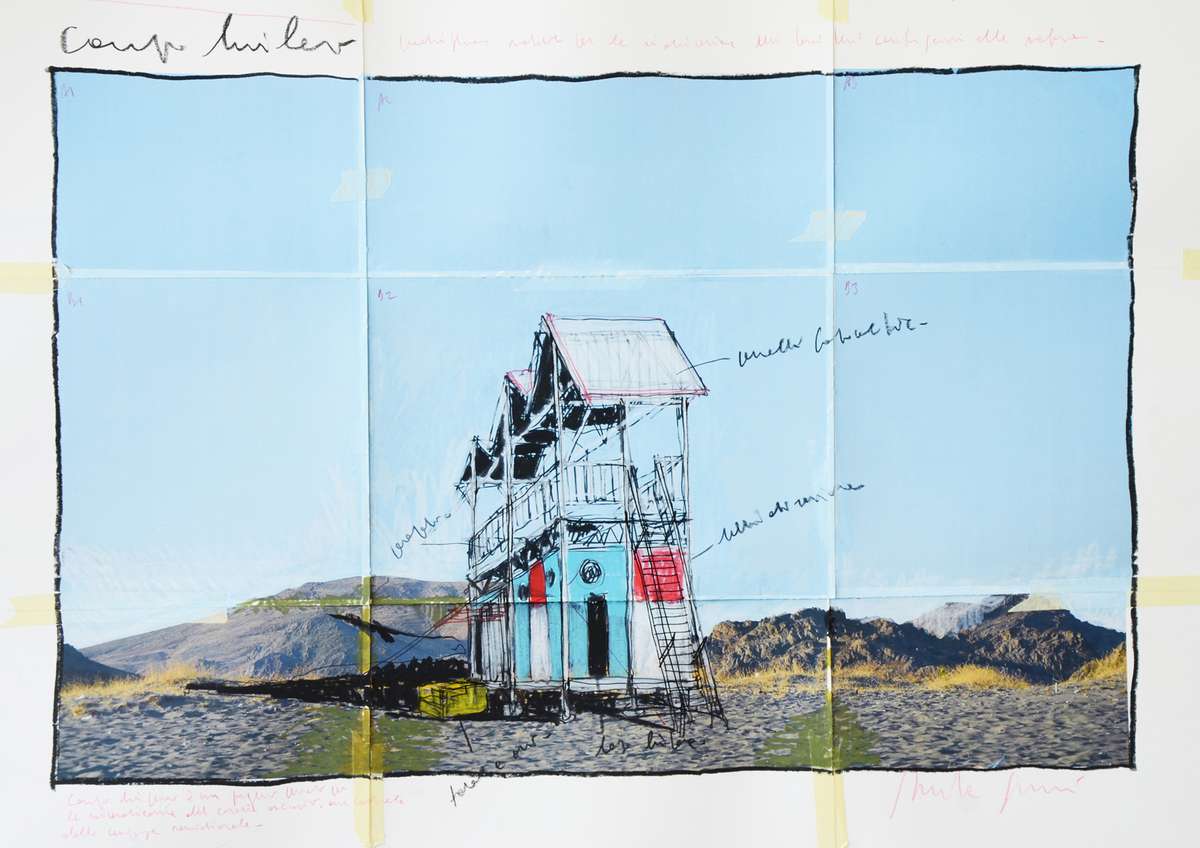
Antonio Scarponi / Conceptual Devices, Campo Libero: preparation sketch.
Campo Libero
Campo Libero

Campo Libero (the innocent house) is a prototype for an off-grid mobile housing unit. It was originally conceived as a device for the reactivation of the lands confiscated from the mafia in the south of Italy for the Italian organization Libera (http://liberaterra.it/it) and commissioned for the Italian Pavilion by the Venice Architecture Biennale 2016. Libera is an organization that promotes legality by providing legal support for people who denounce illegal activities and helping refugees working with no rights in the tomato fields in the south of Italy.
To meet its functional brief, Campo Libero is designed to extend its volume, thanks to an integrated scaffolding structure that provide access to the roof and allows a second story to be built. Campo Libero overlooks the land, reclaiming the archaic lyricism of the southern countryside. Campo Libero is a small project. But it is designed to imagine a soft and reversible way to imagine our built environment.
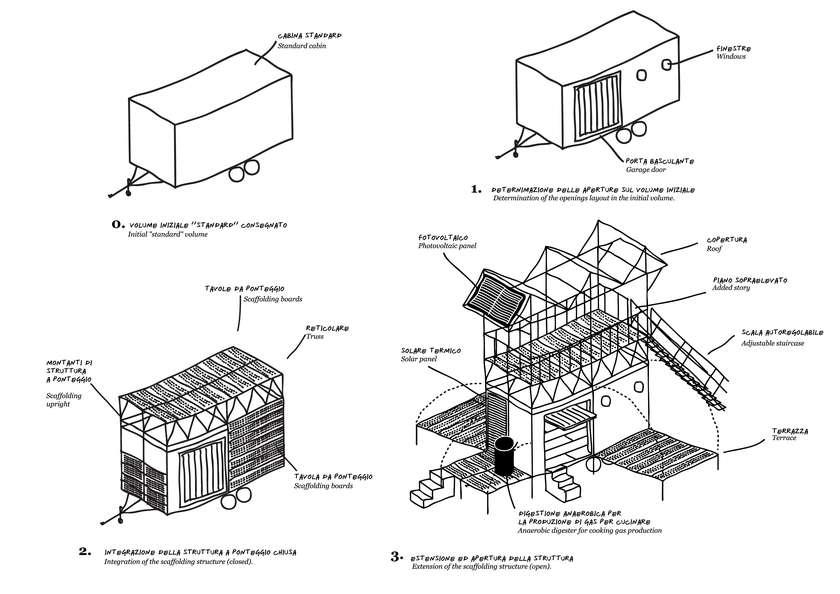
Antonio Scarponi / Conceptual Devices, Campo Libero: Expandible mobile architecture system using scaffolding structures.
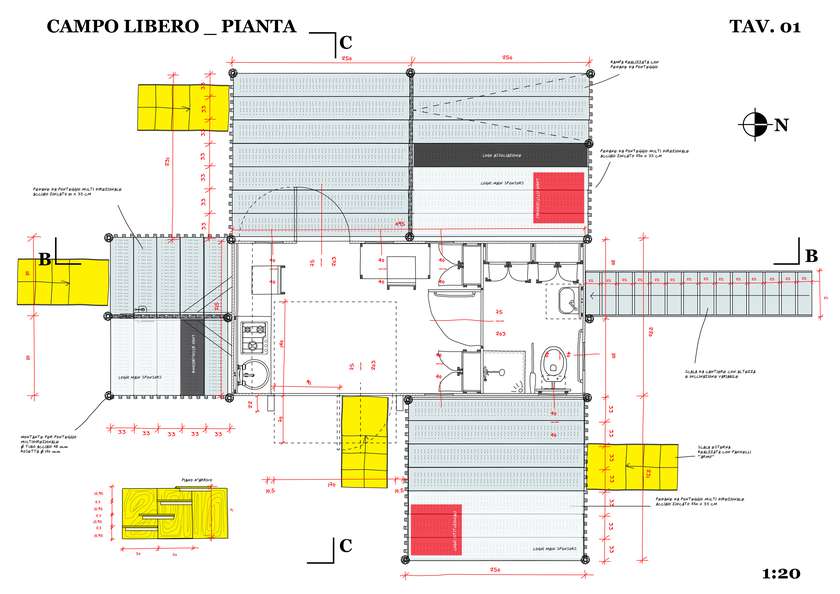
Antonio Scarponi / Conceptual Devices, Campo Libero: plan.
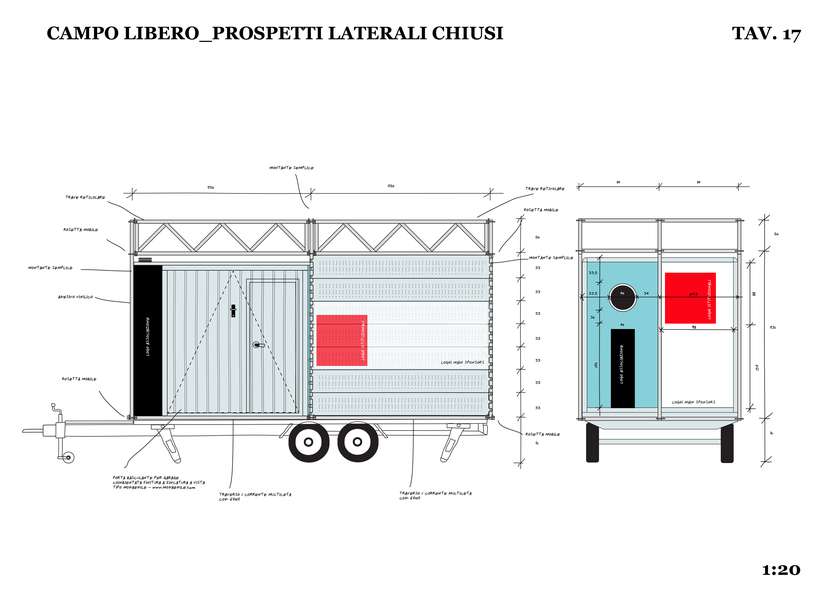
Antonio Scarponi / Conceptual Devices, Campo Libero: elevation on the go.
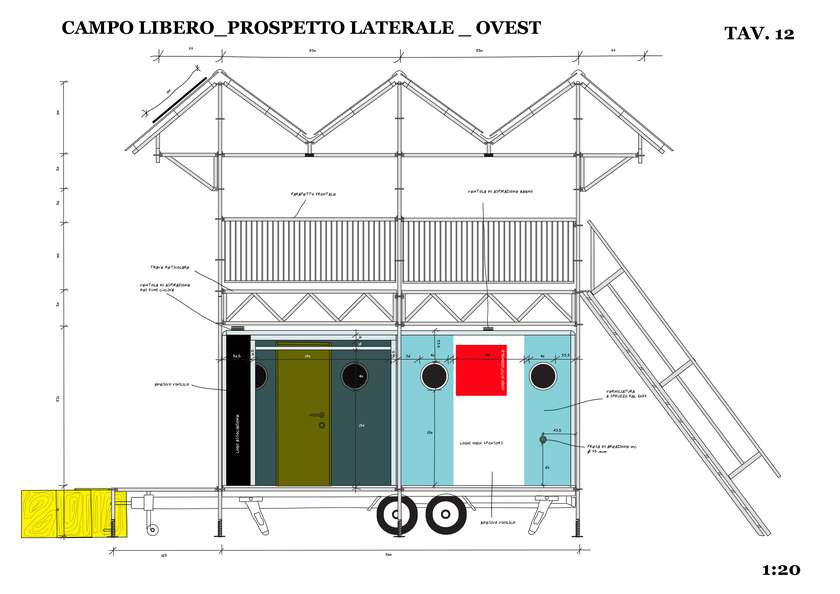
Antonio Scarponi / Conceptual Devices, Campo Libero: elevation open.
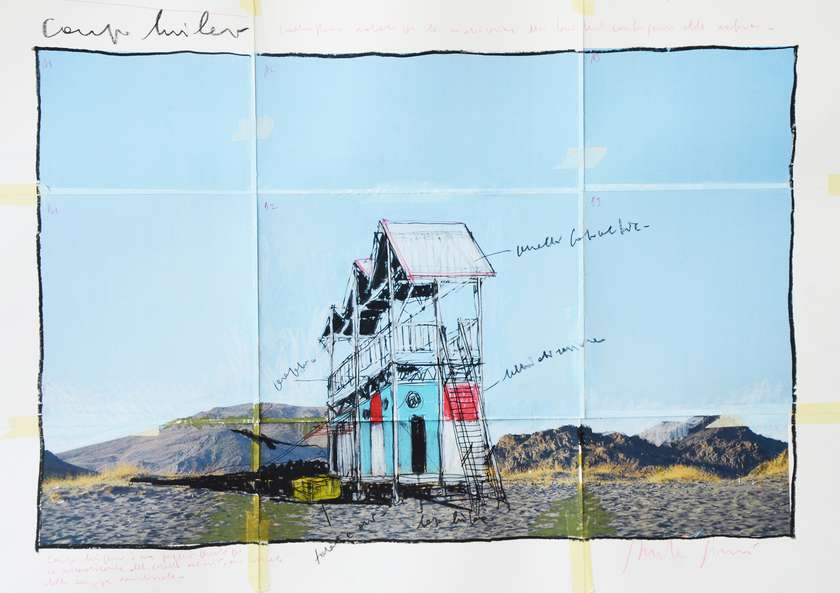
Antonio Scarponi / Conceptual Devices, Campo Libero: preparation sketch.